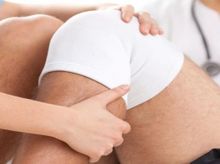Knee Arthroscopy in R Para
Search and Compare the Best Clinics and Doctors at the Lowest Prices for Knee Arthroscopy in R Para



































































































































































No Time?
Tell us what you're looking for and we'll reach out to the top clinics all at once
What does a Knee Arthroscopy Procedure Involve?
Before knee arthroscopy, your doctor may give you a local, regional, or general anesthetic. Your surgeon will make a few small incisions in your knee and insert an arthroscope (a small instrument with a tiny camera attached to it). The tiny camera allows your surgeon to identify any problems and if the problem can be fixed with arthroscopy, your surgeon may insert a small surgical tool through the arthroscope to correct the issue. This method is frequently utilized to identify and address a broad range of knee issues including tears in the meniscus, joints affected by arthritis, and damaged ligaments.
How Long Should I Stay in R Para for a Knee Arthroscopy Procedure?
There are a variety of elements that can determine how long you'll need to remain in R Para for a Knee Arthroscopy. Factors such as your general health condition, the exact issue with your knee being addressed, and your body's healing speed all contribute to this duration. Usually, individuals are released from the medical facility just a few hours following the surgical procedure, especially when it's performed on an outpatient basis. However, it might be necessary for you to continue staying in R Para for a few days after the operation for subsequent doctor appointments and physical therapy sessions.
The procedure may be performed as an outpatient procedure, meaning you may leave the hospital on the same day. However, you will be required to stay in R Para for at least 7 days for follow-up hospital checkups with your surgeon where your progress will be monitored continuously.
What's the Recovery Time for Knee Arthroscopy Procedures in R Para?
The duration to fully recover from a Knee Arthroscopy in R Para hinges on several aspects such as the person's general health status, the intricacy of the issue being addressed, and how dedicated they are to adhere to the recommended post-surgery routines and care. You may be able to resume some light activities and desk work within 5-7 days. You will likely be able to drive within one to three weeks, but allow around 6 to 8 weeks before you resume other physical activities.
What sort of Aftercare is Required for Knee Arthroscopy Procedures in R Para?
After undergoing a medical procedure in a specific region, your health service provider will give you detailed instructions for post-treatment care. The initial days following the operation typically require relaxation, ice application to reduce inflammation, use of compression hosiery to ward off blood clot formation, and consumption of prescribed painkillers. Physiotherapy is also an essential element of the recuperation process, which begins shortly after the operation. It comprises exercises aimed at restoring joint mobility and fortifying adjacent muscles. Also, try to keep your leg elevated and put ice on your knee for the first few days to reduce pain and swelling.
Patients are advised to adopt a wellness-oriented lifestyle, including a well-rounded diet, and ensure sufficient fluid intake to expedite the healing mechanism. Regular scheduled visits to your health service provider will enable you to track your progress and discuss any potential issues. It's vital to adhere to the post-treatment care instructions meticulously to enable a smooth recovery and minimize the risk of post-operational issues.
What's the Success Rate of Knee Arthroscopy Procedures in R Para?
The success rate for a Knee Arthroscopy in R Para is typically favorable. A large number of patients express substantial enhancements in knee mobility and lessening of knee discomfort post-surgery. Nevertheless, the positive outcome of the operation is mostly contingent upon the seriousness of the knee issue, the individual's total health status, and adherence to post-operative care guidelines, which also includes physiotherapy and conditioning.
Are there Alternatives to Knee Arthroscopy Procedures in R Para?
The alternative to knee arthroscopy depends on your specific case. Some alternatives include:
- Therapy to strengthen your muscles
- Medications and injections (hyaluronic acid, corticosteroids
- Platelet-rich plasma (PRP))
- Partial knee replacement surgery
Discuss with your doctor which one is the best option for your case.
This information has been accurately sourced and verified by a medical professional for its accuracy, however, we strongly recommend you to consult with your doctor before pursuing medical procedures overseas.







